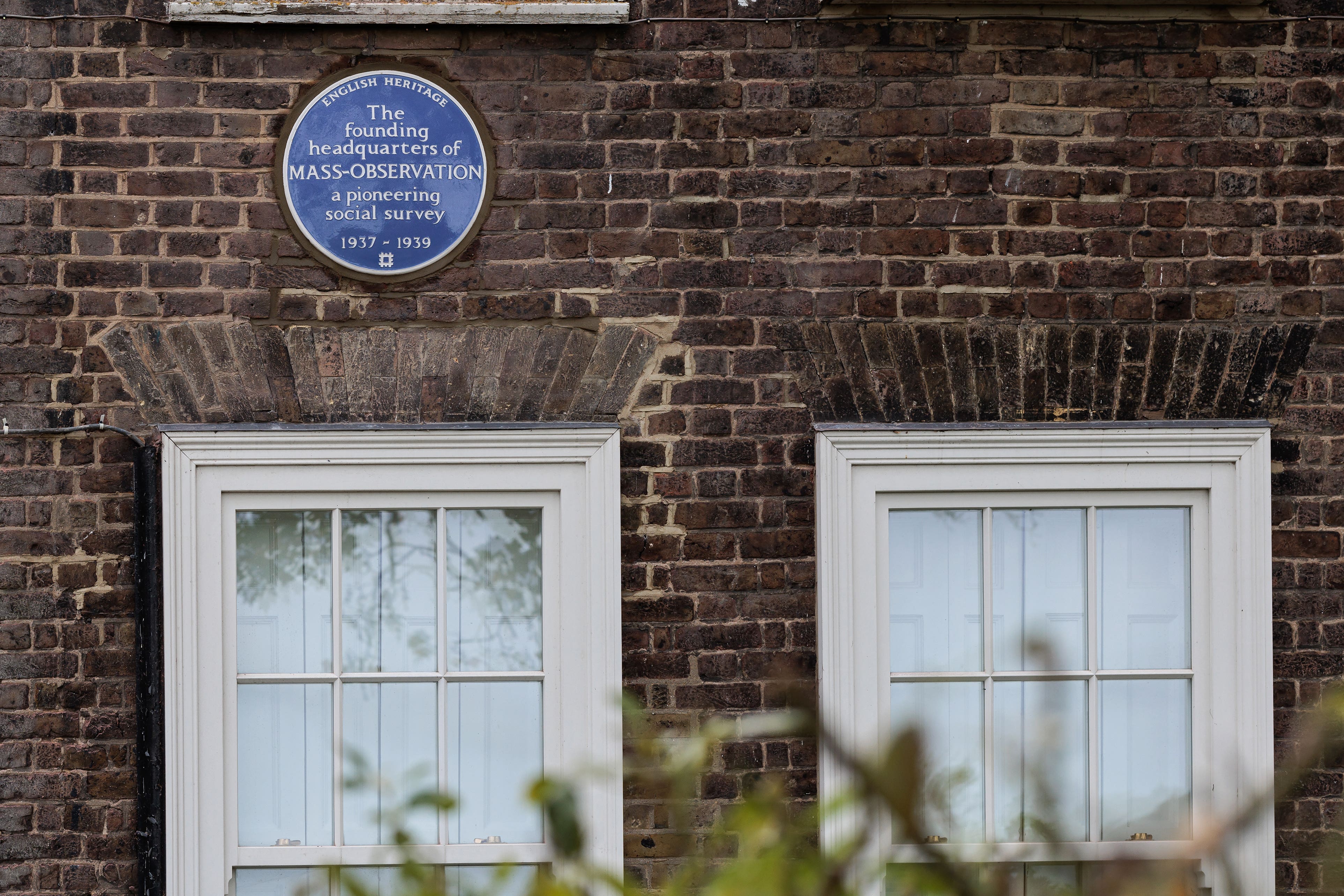Organisation which records thoughts of British public receives blue plaque
Mass Observation project was started to capture the public’s real opinion as opposed to the perception of it as presented in newspapers.

The original headquarters of an organisation which has recorded the thoughts and experiences of the British public since 1937 has been commemorated with a blue plaque.
Mass Observation project was started with the aim of capturing the public’s real opinion as opposed to the perception of it as presented in newspapers.
English Heritage has honoured its birthplace, 6 Grotes Buildings in Blackheath, which was also the home of poet, journalist and co-founder of the organisation Charles Madge.
I have often thought of this building as the missing link between Dickens and Indiana Jones, a vast, dark storage facility with hidden treasures and secret wisdom
Madge recalled that an initial meeting took place in December 1936, the month in which Edward VIII abdicated.
The issue of misconceptions surrounding public opinion was thrown into focus by the abdication and the presumptions made about the public reactions to it.
Madge’s letter to volunteers inviting them to write about everyday life appeared in the New Statesman on January 30 1937, which led to the anthropologist Tom Harrisson to make contact.
They joined forces with the broad aim of creating a social anatomy of Britain.
The difference between the perception and reality of public life that Madge and Harrison were concerned about was said to be illustrated in the responses relating to the government policy of appeasing Hitler.
It was reported as near unanimity in backing Chamberlain’s efforts to avoid war in Europe, but individuals privately expressed to Mass Observation their shame and disgust, along with a willingness by many to admit that they simply did not understand foreign policy.
One of the extracts dated Wednesday July 17 1940, reads “Germany will invade us on Friday!” with a note from the following day saying: “Am anxious to see if we resist invasion.
“In fact, I wish it was Christmas now so that I could know what’s happened. Father is very nervous, a little panicky. Thinks our leaders are too full of bluff.”
The Mass Observation project worked on behalf of the government during World War II and morphed into a market research company in 1949.
It was eventually incorporated into the British Market Research Bureau (BMRB) which, among other things, complied the pop charts for many years.
The Mass Observation archives were lodged by Harrisson at the University of Sussex in 1970 and the project was started up again in 1981 by Professor David Pocock at the university and continues to run.
In 2013, the archive was transferred to The Keep, a dedicated archive facility close to the University, just outside Brighton.
Simon Garfield, the writer and trustee of Mass Observation, said: “I have often thought of this building as the missing link between Dickens and Indiana Jones, a vast, dark storage facility with hidden treasures and secret wisdom.
“It is wonderful that Charles Madge’s home still exists, and that we now have a permanent commemoration of the birthplace and engine room of such an extraordinary adventure.
“It is also a tribute to the thousands of contributors who shared their innermost thoughts and observations in a way that makes us forever able to understand their lives, and therefore ours, a little better.”
A senior historian at English Heritage, Howard Spencer, added: “Mass Observation studies ranged from an analysis of the ‘Lambeth Walk’ and the pub culture of working-class London, to a survey on the extent of antisemitic beliefs.
“It is this eclectic approach that made the project so unique and ground-breaking, and such a valuable sociological and historical resource.
“By the end of the project’s first year there were around six hundred ‘mass observers’ and it would have been in this late-18th-century house that Madge – helped by a team of volunteers – sifted through hundreds of handwritten responses, including many on the coronation of George VI.
“It seems very fitting to look back at that moment in history as we anticipate next year’s coronation.”
Bookmark popover
Removed from bookmarks